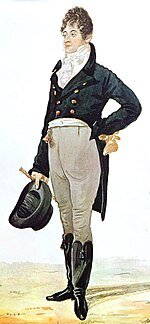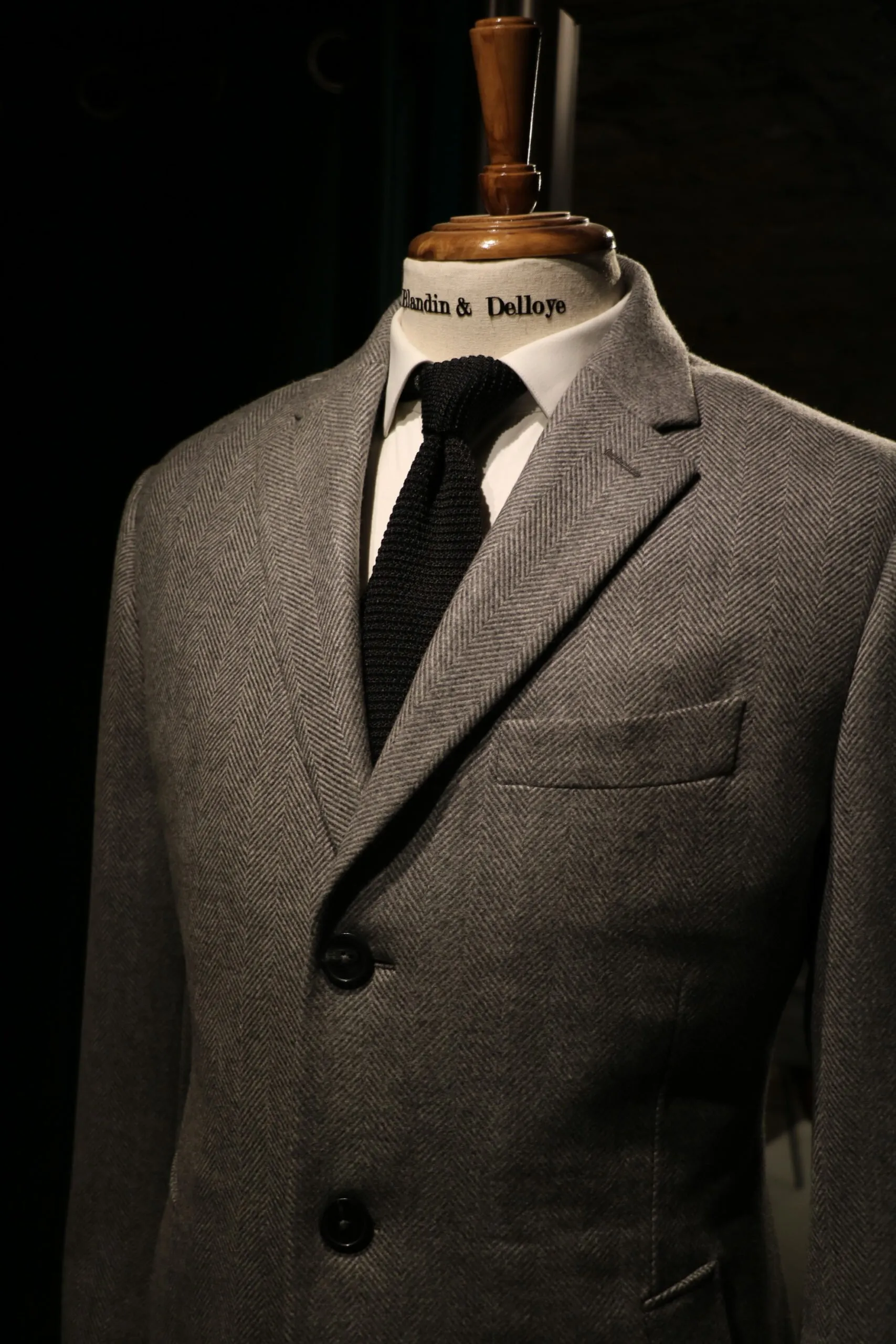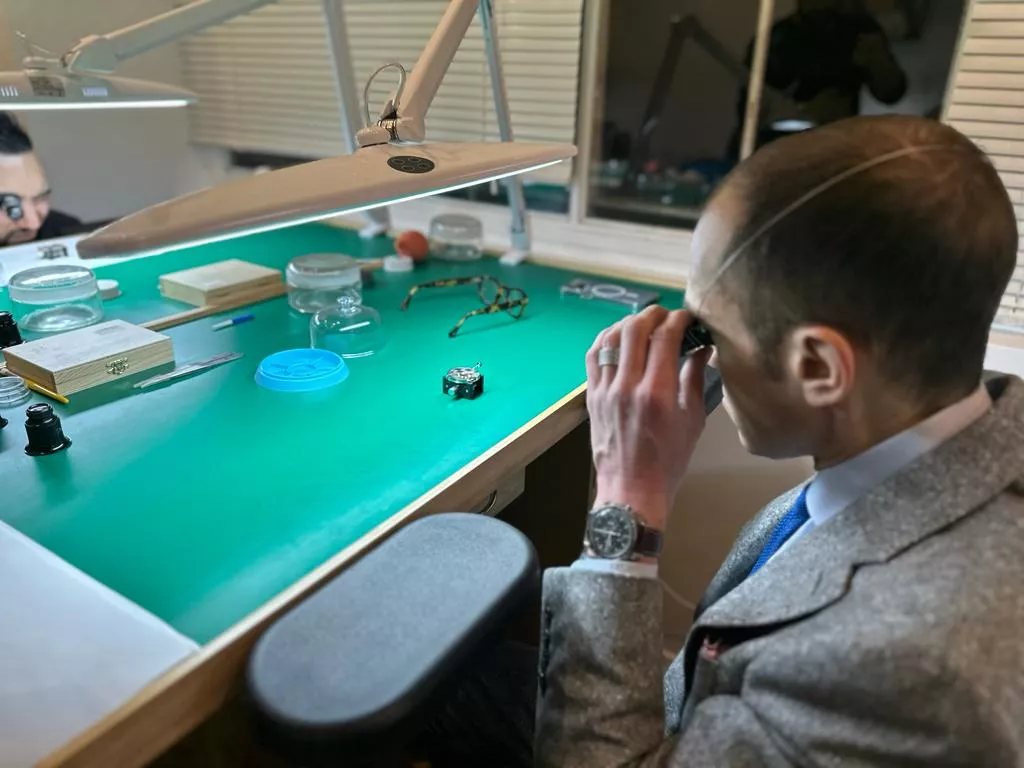
Do you know its origins?
The foundations of the suit as we know it today were laid at the end of the 19th century. It was Brummell (the father of Dandyism) who instituted the wearing of suits at the English royal court. The Prince of Wales was a highly influential man, destined to become the monarch of the United Kingdom (Brummell was one of his protégés), and therefore had a stylistic influence on the whole world. As a result, Brummell’s revisiting of the suit spread throughout the Western world, eventually becoming institutionalized.
It’s interesting to see how it has evolved over the ages (to understand how it became an essential part of the men’s wardrobe). Today, the suit has become not only a work tool, but also an essential business garment.
The first suits
The very first form of suit was the three-button with small notch lapels that went up quite high, as well as a jacket. The top two buttons were closed (forming a vertical line and elongating the silhouette). Urban environments and industrial pollution raise temperatures over the years, circumstances that quickly led men to abandon the jacket. The buttonhole too will slide down the suit, more precisely on the three buttons.
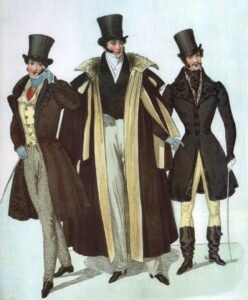
This evolution in our lifestyle inevitably led to the appearance of the two-button suit. With a lower buttonhole, the two-button suit allowed men to emphasize their torso. The logical next step was to use darts to accentuate the torso and give it a V-shape.
Peaked lapels in particular contributed to the V-shape of the torso, especially during the interwar period.
Originally, they were mainly used on single-breasted jackets. They were soon integrated into the business wardrobe (i.e., daywear), where their use is more regular and just as formal. Peaked lapels are now positioned in all registers of men’s wardrobe (festive, formal and business). This is in contrast to simple notch lapels, which are intended only for business or formal wear.
The single-breasted jacket with peaked lapels was a choice alternative to the double-breasted version, which was less formal and much less warm (because it could easily be worn open, unlike the double-breasted suit, and the opening over the torso was much wider).
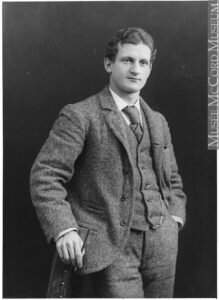
The double-breasted suit
Before the Second World War, double-breasted suits were as popular as casual suits, especially in their 6/2 form (six buttons in two rows of three). It was the Duke of Kent (a paragon of British elegance and brother of the Duke of Windsor) who revitalized the double-breasted suit with a much longer version, whose lapels extended below the waist. A double-breasted jacket on which only the last button is fastened. And with good reason: they elongate the silhouette, creating a beautiful impression of height.
It was really at the end of the Second World War (a date marking the emergence of mass ready-to-wear throughout the Western world, thanks to the massive diffusion of American culture through iconic objects such as jeans, Marlboros and chewing gum) that the single-breasted suit was favored, as it was much easier to produce.
The 3-piece suit
Today’s jacket was inspired by the post-boy’s outfit in 19th-century England. It was mainly used to protect against the cold. Most men wore them in winter, under their simple suit. In recent years, the wearing of jackets has become rather irregular, due to the influence of mass-market fashion, which always favors the simplest to produce (the 2-button, 2-piece suit).
That said, a three-piece suit is much dressier and more versatile. A good jacket should cover the waist of the pants and rise very slightly above the waist button of the jacket. A higher jacket will conceal the tie too much. Nor should it conceal the sides of the shirt. Avoid wearing low-waisted pants. The purpose of the vest is not to reveal the belt and shirt (which will break the height of the silhouette) but rather to form a more harmonious transition between jacket and pants.
Of course, we won’t close the last button on the vest. For the record, this is because an English monarch who was too fat to button it gave it up. His entire court imitated him as a matter of courtesy.
Today, it has become an institutional rule. To tell you the truth, the same thing happened with the second button on the suit. The aristocrats of the 19th century ate in astronomical quantities, so much so that they would remove the last button of the suit at the end of the meal to feel better. A tradition that has been perpetuated to the point where today, this last button is no longer worn at all (for this cultural reason, but also for aesthetic reasons, as the suit falls much better with one button removed).
Today, the 3-button suit has all but disappeared (even after a brief comeback in the 90s). They are less suited to the morphology and needs of the modern gentleman (who wants easy access to his pockets, for example). The 2-button suit is therefore the main item on the market, whatever the range, and is found in the vast majority of today’s collections. As for the double-breasted suit, it may be less common, but it remains the prerogative of the tailors and fine houses that offer it. It’s an imposing, sophisticated suit that says a lot about its wearer.
We think every gentleman should have at least one in his business wardrobe. Then, for those who particularly like it, it’s a good idea to have another as a tuxedo, which will be a welcome addition to any special festivities.
